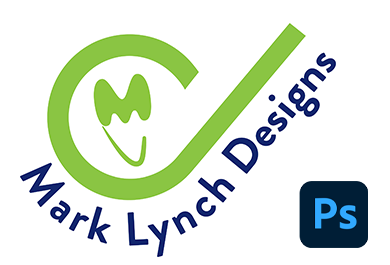Vector vs. Raster Graphics: A Beginner's Guid
- Mark Lynch

- May 27, 2024
- 2 min read
Introduction: In the realm of digital design, grasping the disparity between vector and raster graphics is paramount. Each form of graphic possesses distinct characteristics and applications. In this tutorial blog, we will delve into the disparities between vector and raster graphics and discuss the Adobe programs best suited for working with each type.
What are Vector and Raster Graphics?
Vector Graphics:
Vector graphics consist of points, lines, curves, and shapes governed by mathematical equations.
They are resolution-independent, permitting scalability to any size without compromising quality.
Common file formats encompass AI (Adobe Illustrator), EPS, SVG, and PDF.
Examples include logos, illustrations, and typography.
Raster Graphics:
Raster graphics are constructed from a grid of pixels, each possessing its unique color value.
They are resolution-dependent, susceptible to quality degradation when scaled up.
Common file formats encompass JPEG, PNG, GIF, and TIFF.
Examples include photographs, digital paintings, and web graphics.
Choosing the Right Program:
For Vector Graphics: Adobe Illustrator
Adobe Illustrator serves as the industry-standard program for crafting vector graphics.
It offers robust tools for drawing, editing, and manipulating shapes and paths.
Key features include the Pen Tool, Shape Tools, and the capability to generate intricate vector artwork.
Illustrator files (.ai) are fully editable and amenable to infinite scaling sans loss of quality.
Explore the Difference: A closer look at my logo in Photoshop and Illustrator. Witness the impact of zooming in and discover how each format affects clarity and quality
For Raster Graphics: Adobe Photoshop
Adobe Photoshop serves as the go-to program for manipulating and editing raster graphics.
It provides a broad spectrum of tools for retouching photos, crafting digital artwork, and designing web graphics.
Key features encompass layers, brushes, filters, and adjustment tools.
Photoshop files (.psd) are raster-based and are suitable for editing and manipulating photographs and other raster images.
When to Use Each Type:
Vector Graphics:
Ideal for projects necessitating scalability, such as logos, icons, and illustrations.
Suited for print design, as vector artwork can be scaled to any size without sacrificing quality.
Recommended for crafting clean, crisp artwork with sharp edges and smooth lines.
Raster Graphics:
Best suited for projects featuring complex imagery, including photographs and digital paintings.
Ideal for web design, as raster graphics accurately represent textures and gradients.
Recommended for projects requiring photo editing, retouching, or manipulation.
Conclusion:
Understanding the disparity between vector and raster graphics is fundamental for any designer. By selecting the appropriate graphic type for your project and utilising the corresponding Adobe program, you can craft stunning artwork with confidence. Whether designing a logo in Illustrator or retouching a photograph in Photoshop, discerning when and how to utilise vector and raster graphics will elevate your design prowess.








Comments